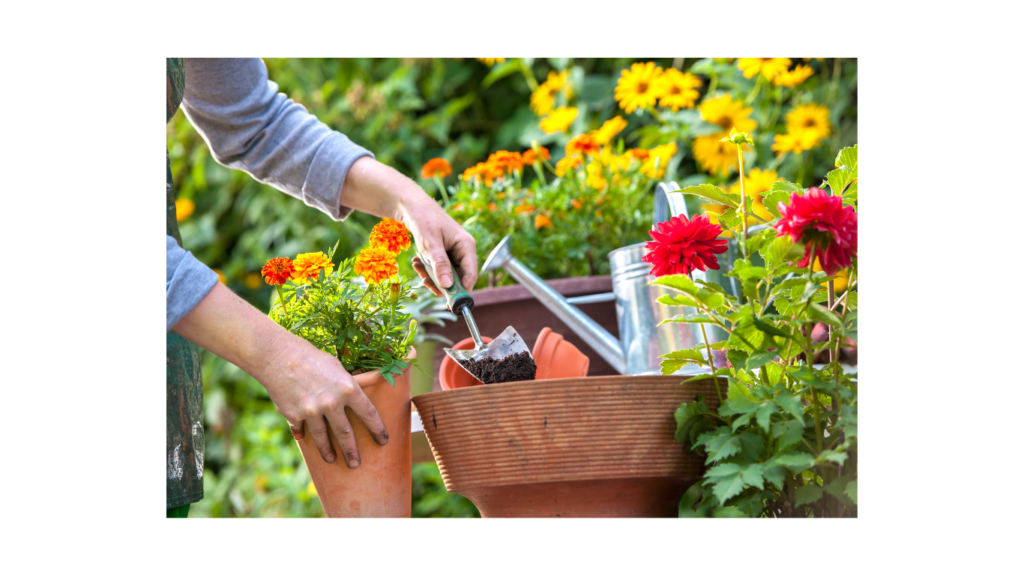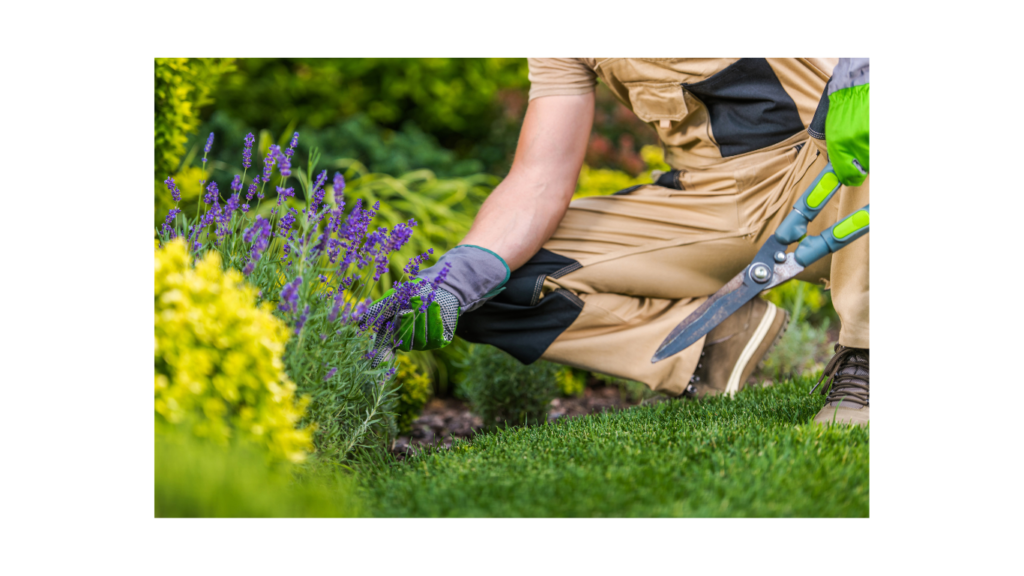Creating a garden that attracts pollinators is not only a way to support the environment but also an essential action to preserve biodiversity and promote ecological health. Bees, butterflies, and birds play crucial roles in pollination, which is vital for plant growth, food production, and maintaining balanced ecosystems. This article aims to teach you how to create a garden that attracts these pollinators, detailing the best practices, recommended plants, and important considerations to maintain a habitat conducive to these species.
The Crucial Role of Pollinators in Nature
Before diving into the practices for creating a pollinator-friendly garden, it’s important to understand the essential role these creatures play in the ecosystem. Pollinators are responsible for transferring pollen from one flower to another, facilitating plant reproduction. Without these creatures, most flowering plants could not produce fruits or seeds, which would have a profound impact not only on plants but on the entire food chain that depends on them.
Bees: The Most Important Pollinators
Bees are undoubtedly one of the most important pollinators. It is estimated that over 75% of flowering plants rely on pollination, and many of these plants are cultivated for food production. In addition to honeybees, which are often used in agriculture for large-scale pollination, there are also native bees that perform an equally crucial job. They visit flowers of various species, collecting nectar and pollen, which supports plant reproduction.
Bee Species
- Honeybee (Apis mellifera): This is the most well-known bee species and is widely used in agriculture for commercial pollination. It is attracted to a variety of flowers, such as sunflowers, lavender, and eucalyptus, and can be found in almost all regions of the world.
- Solitary Bee (Melipona spp.): This species of bee does not form colonies like honeybees. Solitary bees are essential in pollinating many plants, especially those that are not easily accessed by social bees. They prefer flowers like raspberries, strawberries, and fruit trees.
- Carpenter Bee (Xylocopa spp.): Carpenter bees are large and robust, known for nesting in wood. They are excellent pollinators of plants like chamomile and mint.
- Bumblebee (Bombus spp.): Bumblebees are highly effective in pollinating plants such as tomatoes, blueberries, and vegetables, making them essential for many crops.
The decline in bee populations has raised significant concerns due to its impact on food production. Factors such as pesticide use, disease, habitat loss, and climate change have all affected these populations. Creating gardens with plants that attract bees is one of the most effective ways to help preserve these vital pollinators.
Butterflies: Beauty and Pollination
While butterflies may not be as efficient as bees in pollination, they still play an important role. As they feed on nectar from flowers, butterflies help transfer pollen between plants. In addition, butterflies have a symbiotic relationship with several plants, and many species depend on specific plants for oviposition (egg-laying).
Butterfly Species
- Monarch Butterfly (Danaus plexippus): One of the most famous butterflies, the Monarch is known for its long migration. It is attracted to plants in the Asclepias genus (milkweed), as its larvae feed exclusively on these plants.
- Red Admiral Butterfly (Vanessa atalanta): Known for its vibrant colors, this butterfly loves flowers with bright colors, such as daisies, marigolds, and geraniums.
- Swallowtail Butterfly (Papilio machaon): Also known as the Old World Swallowtail, this species is attracted to plants in the Apiaceae family (such as carrots and fennel), which are food sources for both its larvae and adults.
- Tigris Butterfly (Danaus eresimus): This exotic-looking butterfly prefers plants like crotalaria and tagetes for both feeding and oviposition.
Butterflies are also important as indicators of environmental health. They are sensitive to changes in climate and habitat, such as pollution and habitat destruction. Their presence or absence can serve as a thermometer for the overall state of the ecosystem.
Birds: Pollinators and Seed Dispersers
While birds are not typically considered primary pollinators compared to bees, many species of birds, such as hummingbirds and finches, play an important role in pollinating plants, especially in tropical and subtropical areas. Hummingbirds, for example, have a direct relationship with flowers, feeding on nectar and transferring pollen from one plant to another.
In addition to pollination, birds are important seed dispersers. They consume fruits and scatter the seeds, allowing new plants to grow in different areas, which helps maintain genetic diversity and ecosystem health. Creating a garden that attracts birds, particularly those that produce fruits and seeds, significantly contributes to plant regeneration and biodiversity.
Bird Species that Pollinate
- Hummingbird (Trochilidae): Hummingbirds are the primary pollinators of various tropical and subtropical plants. They have a specialized tongue to suck nectar from flowers like nasturtiums, hibiscus, and bougainvillea. Their presence can be drawn to brightly colored, tubular flowers that allow easy access to nectar.
- Finch (Fringilla coelebs): A common bird in European gardens, finches feed on seeds and, in doing so, help disperse seeds of plants like clover, alfalfa, and pinks.
- Thrush (Turdus spp.): Known for its melodious song, the thrush also plays the role of seed disperser. By consuming fruits from plants like avocados, figs, and pomegranates, it helps scatter seeds across different areas, aiding plant regeneration.
- Purple-throated Carib Hummingbird (Anthracothorax viridis): This species of hummingbird, found in tropical regions, is attracted to vibrant flowers and feeds primarily on the nectar of Jerusalem artichokes, cabbage palms, and moringa.
Creating a Pollinator-Friendly Garden for Bees, Butterflies, and Birds
Now that we understand the importance of pollinators, we can focus on how to create a garden that attracts and supports bees, butterflies, and birds. The key is to ensure that these pollinators’ basic needs—such as food, water, and shelter—are present in the garden, providing a conducive environment for their development and survival.
Choosing the Right Plants
Selecting the right plants is crucial in creating a garden that attracts pollinators. Plants need to produce nectar and pollen, essential resources for bee and butterfly feeding. Some plants, like sunflowers, lavender, and coneflowers, are well-known for attracting bees due to their abundance of nectar and pollen. Butterflies, on the other hand, are attracted to colorful, fragrant flowers such as marigolds, zinnias, and geraniums.
It’s also important to diversify the garden, providing different types of flowers for various species of pollinators. Certain plants attract more bees, while others attract butterflies or birds. Plants like daisies and tulips are beneficial for attracting butterflies, while rosemary and thyme are ideal for bees. It’s also a good idea to include fruit- or seed-producing plants like wild strawberries, tomatoes, and sorghum to attract birds.
Plants for Different Seasons of the Year
In addition to plant variety, it’s essential that the garden has flowers that bloom at different times of the year. This ensures that pollinators have access to nectar and pollen throughout the year, not just during a specific season. Some plants are better suited for spring, while others bloom in summer or fall, providing a continuous flow of resources.
For example, in spring, you can grow violets, geraniums, and sage; in summer, sunflowers, marigolds, and coneflowers are ideal; and in the fall, flowers like chrysanthemums and asters can still provide nectar. Additionally, plants like lavender and rosemary bloom during the winter, helping to keep pollinators fed during colder months.
Providing Water and Shelter
In addition to plants, it’s important to offer water and shelter for pollinators. A shallow water container is a great resource for butterflies and bees, who often seek hydration on low surfaces. Birds also appreciate water sources, not only for drinking but also for bathing.
Shelter is equally important, especially for bees. You can install a bee hotel in your garden to provide a safe place for solitary bees to build their nests. For butterflies, it’s helpful to have dense vegetation and shrubs where they can hide and protect themselves from strong winds. Trees and shrubs also serve as shelter for birds, providing a safe place to sleep and protect themselves from predators.
Avoiding Pesticides
Pesticides are one of the biggest threats to pollinators, particularly bees. Many of these chemicals are toxic to insects and can kill them or affect their ability to feed and navigate. To create a safe and healthy garden for pollinators, it’s essential to avoid using pesticides. Instead, you can opt for natural pest control methods, such as using beneficial insects like ladybugs and lacewings or making homemade solutions like organic soap or vinegar sprays.
Benefits of Creating a Pollinator-Friendly Garden
Creating a garden that attracts pollinators brings a range of benefits, not only to the environment but also to the gardener. Some of the main benefits include:
- Supporting Sustainable Agriculture: By creating a garden that attracts pollinators, you directly contribute to increased plant pollination. This results in greater fruit and vegetable production, helping to ensure that pollinators also benefit from a healthy environment.
- Preserving Biodiversity: Plant diversity attracts a variety of pollinators, promoting biodiversity in your garden and surrounding areas. Creating a diverse garden helps strengthen ecosystems and increase environmental resilience.
- Enhancing the Aesthetics of Your Garden: A garden rich in flowers, butterflies, and birds becomes visually appealing and dynamic. The presence of these pollinators transforms your space into a vibrant, colorful, and lively environment.
- Positive Impact on Human Health: Connecting with nature has proven benefits for mental and physical well-being. A garden filled with pollinators offers a relaxing environment, ideal for meditation and enjoying nature.
Final Considerations: A Step Toward a Sustainable Future
Creating a pollinator-friendly garden with plants that attract bees, butterflies, and birds is an effective way to support biodiversity and promote ecological health. These pollinators are essential for food production and the preservation of balanced ecosystems, and by taking steps to protect their populations, you contribute to a more sustainable and healthier planet.
Moreover, by adopting sustainable gardening practices, such as growing native plants and using natural pest control methods, you are helping to preserve natural resources and minimize negative environmental impacts. Your garden can serve as a small but powerful refuge for pollinators and other wildlife, playing an important role in biodiversity conservation.
Remember that pollinator-friendly gardening is not just about aesthetic beauty but creating a balanced environment that respects the needs of various species that rely on vegetation for survival. With a little planning and dedication, anyone can transform their outdoor space into a vibrant paradise for pollinators while contributing to a more sustainable future for all.
Additionally, caring for pollinators and cultivating a garden friendly to them is an invitation to reflect on the interdependence of all life forms on the planet and how small actions can have big impacts on preserving our planet. The future of agriculture, biodiversity, and ecosystems largely depends on our ability to act locally, creating healthy and sustainable habitats for pollinators. By cultivating gardens that attract bees, butterflies, and birds, we are laying the foundation for a healthier, more balanced, and resilient planet.



